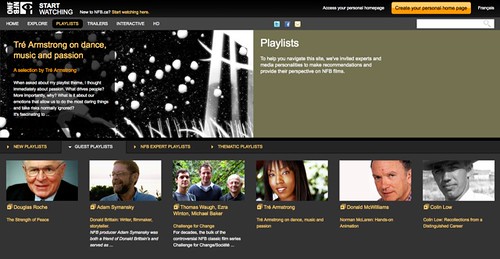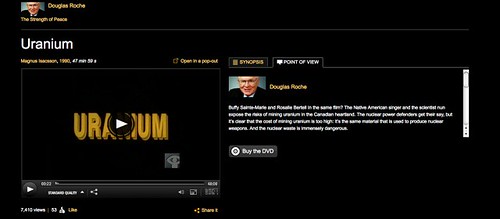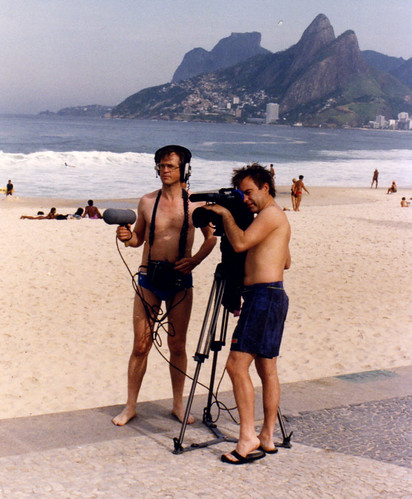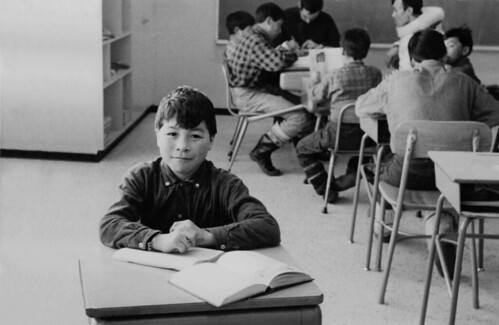Danny Raymond, Alex ‘Breezy’ Bryson, Mikerson ‘Swagga Kid’ Stiverne and his older brother Michael ‘da Prince Stiverne.
Tag: Martin Duckworth
NFB film playlists
My young colleague Tobi Elliott who helps me with this blog has this to say:
I recently spent a morning browsing the NFB’s excellent resource of film playlists. The playlists have been a feature of the new www.nfb.ca website since it launched in January 2009. Invited guests and their own staff have grouped together films around themes ranging from the powerful to the whimsical, the obvious to the obscure.
I have one conclusion…. You can get lost in there! The only way I can justify spending hours watching ten of these films at a time, is by rationalizing that it’s the duty of every young filmmaker to see the work of filmmakers that have gone before them.
Thanks to the playlists, it becomes a delightful chore. They are a useful tool for whittling down the wonderful selection of films available on the website. They also provide insight into the making-of certain films and in some cases, the historical context that otherwise would be lost to someone of my generation.
The NFB’s Guest Playlists include film groupings by the following people, some of whom are in-house producers and filmmakers:
- Douglas Roche: The Strength of Peace (Magnus’ film Uranium, Terry Nash’s If You Love This Planet, and Martin Duckworth’s Return to Dresden are included in this list)
- Tre Armstrong: Dance, Music and Passion
- Donald McWilliams: Norman McLaren: Hands-on Animation
- Colin Low: Recollections from a Distinguished Career
- Alanis Obomsawin: a Retrospective
- Gil Cardinal: The Aboriginal Voice
- Katerina Cizek: Manifesto for interventionist Media
- Thomas Waugh, Ezra Winton and Michael Baker: Challenge for Change
- Adam Symansky: Donald Brittain
The guest authors of their collections take one of two approaches in their selections: either they focus on a theme or a particular filmmaker. Cizek’s playlist brings together 11 films on “the philosophy and practice of ‘Art as a Hammer’.” Her picks range from 1944’s short Democracy at Work to 2008’s RiP! A Remix Manifesto.
Symansky’s collection brings together eight Donald Brittain films, each written up with a personal recollection of Symansky’s about the “making of” of the film. The writing alone is an invaluable resource for younger filmmakers like myself.
In the NFB’s Expert Playlists, their resident collections expert, Albert Ohayon, put together six useful playlists:
- 10 Great Films from the last decade you may not have seen
- The 1960s: An Explosion of Creativity
- The 1950s: Television and the Move to Montreal
- Canada’s Diverse Cultures
- Bill Mason: Beyond the wild, beyond the paddle
And finally, the Thematic Playlists comprise almost sixty collections of films and clips, intriguing because there’s such a huge variety. Where else can you access groupings ranging from ‘Winter Sports Movies” to “Canada’s got Treasures!”?
Treasures indeed.
Thanks to Tobi Elliott for this post.
Wearing two hats
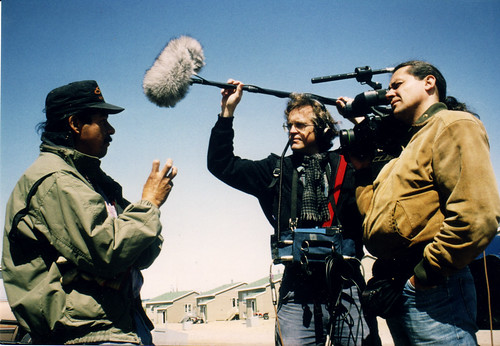
Film students sometimes ask theoretical questions which, while not uninteresting, are not particularly important to a practitioner. But Tom Eden from the documentary program in Rivière du Loup asked me this: is it a good idea to direct and to do camera and sound at the same time?
This is a big question, and I could write a book about it. Some pioneers of cinéma vérité did their own camera work (Pennebaker) or sound (Wiseman). Some of my colleagues whose work I admire do their own camera work: John Walker, Martin Duckworth, Ali Kazimi… and I do my own sound – as did one filmmaker who really inspired me, Barbara Kopple.
I think some of us took this approach years ago because we wanted to have a small crew and also to maximize the number of shooting days (by spending less money per shooting day.) But the combination of reduced budgets and accessible digital technologies have really brought this way of working to the fore.
These days there are filmmakers who do everything themselves – one example is Montreal filmmaker Eve Lamont, who just released a film on prostitution (L’Imposture), which she directed while doing camera and sound herself. An impressive achievement, considering some of the situations involved several different characters, sometimes in uncontrolled environments.
The other day I saw a very good film, Gasland (shortlisted for the Oscars) shot by the filmmaker – but the shooting is pretty awful. What saves the film is the personal narrative tone, the investigation and the excellent editing. Imagine if it had been well shot as well!
For me, doing camera work would have come naturally, as I have a background in visual arts and photography. But I have chosen to do sound because I find that it allows me to have a better overview of what’s going on, looking around to see what else is going on outside of the frame.
So… doing creative tech work while directing has many advantages, primarily reducing the size of the crew and controlling costs. But here is a caution. Directing really requires your full attention. So does camera work and sound recording. So if you wear two of these hats at the same time, you are inevitably compromising.
If you are on a tight production schedule, something will get less attention. So one key issue is time. Doing camera or sound is great if you know how to do it, and you are not in a rush! Another key is really knowing your gear. (You don’t want to be struggling with tech issues at the crucial moment when you need to reassure your characters, negotiate access, ask a key question…) And your relationship and communications with whoever else is working with you needs to be really tight.
Here is an old photo to show that directing and doing tech work can be fun: myself and DOP James Grey on a beach in Rio during the 1992 Earth Summit in Rio de Janeiro.
Thanks to Tobi Elliott for her help with the blog.
The Experimental Eskimos broadcast premiere
Barry Greenwald‘s terrific documentary The Experimental Eskimos reveals an extraordinary attempt at social engineering. The film follows three Inuit, Peter Ittinuar, Zebedee Nungak and Eric Tagoona, who, as 12-year-old boys, were shipped South in the early 1960s from their homes in the Canadian Arctic to attend white public schools in Ottawa. The consequences for their identity and culture were brushed aside.
In their twenties, they became a thorn in the government’s side and were instrumental in the establishment of aboriginal rights that led to the creation of the territory of Nunavut. The film is the untold story of how an experiment in assimilation not only changed the future of their people but the actual geo-political configuration of Canada.
My friend Barry’s previous documentaries include Taxi!, Who Gets In?, Between Two Worlds, The Negotiator, and High Risk Offender. Barry, Ali Kazimi and I share a website, and Barry’s complete bio can be found here.
The film will have its World Broadcast Premiere on Wednesday October 13 at 9 pm ET/MT on the Aboriginal Peoples Television Network‘s (APTN) Reel Insights strand across Canada.
Now, if I praised this film you might find that suspect, as Barry is a close friend of mine. So let me quote filmmaker Martin Duckworth – he copied me on a message to Barry after seeing the film:
What a brilliant and beautiful film, Barry. Such a great story, and so cleverly told. Relating personal tragedy and political triumph. Allowing the story to unfold at its own pace, with each chapter appearing as a surprise and a revelation. The film is a work of ingenuity and dedication. Chiseled to perfection. You have reached a pinnacle. It leaves one wondering, “What is there left for this guy to do?” My god, I must look at it again.
Eskimos received the “Allan King Award for Excellence in Documentary” at the recent Directors Guild of Canada Awards (Editor Nick Hector, Sound Editor Michael Bonini, Director Barry). The film has also received honours at the Winnipeg Aboriginal Film Festival (Best Feature Documentary) and the Yorkton Film Festival (NFB Kathleen Shannon Award).
Have a look at the trailer here.
Thanks to Tobi Elliott for her help with this blog.
Une expérience émouvante: Alphée et les Étoiles
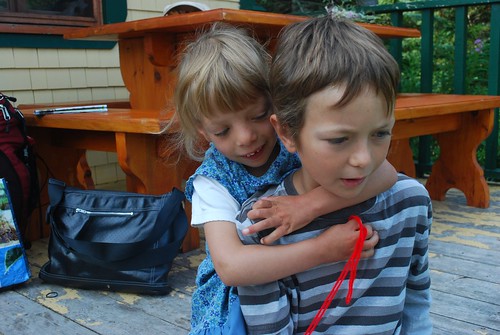
Il ne m’arrive pas souvent de travailler sur les projets d’autres cinéastes. Mais voici que depuis quelques mois je travaille avec réalisateur Hugo Latulippe sur son film Alphée et les Étoiles et le projet web qui doit l’accompagner.
Hugo est l’auteur de plusieurs long-métrages, dont Bacon, le film et Ce qu’il reste de nous (avec François Prévost), ainsi que de la série Manifestes en série. Alphée, 5 ans, est la fille de Hugo et l’environnementaliste très connue Laure Waridel. Elle est atteinte d’une condition génétique rare qu’on nomme Smith-Lemli-Opitz, qui cause des retards de dévéloppement.
Hugo et Laure sont des amis depuis longtemps, et des personnes que je respecte énormément. Il y a quelques mois, je leur ai demandé si je pouvais faire un film sur eux et leur relation avec Alphée. Hugo m’a répondu qu’il faisait lui-même un film qui s’appellera Alphée et les Étoiles, et du même souffle il m’a demandé si je pouvais l’aider. Il voulait que je fasse les entrevues avec lui et Laure pour le film, et aussi que j’assure la réalisation des tournages pour le site web qui l’accompagnera.
C’est ainsi que j’ai pu passer quelques merveilleuses journées à l’Île Verte avec Hugo, Laure, Alphée et son frère Colin, 8 ans, qui aime, comme moi, jouer aux échecs et aller à la pêche. Les entrevues avec Hugo et Laure ont fait ressortir toute leur réflexion critique sur la question de la ‘normalité’ ainsi que les difficultés et les joies que ressentent les parents d’un enfant atteint de ce type de condition particulière.
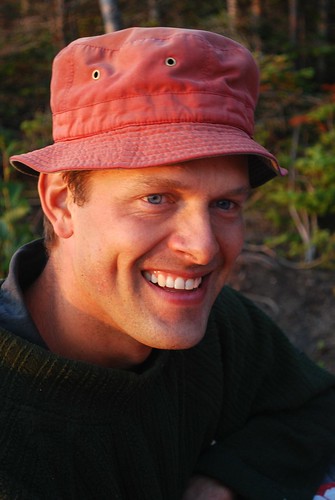
Maintenant je travaille avec ma femme Jocelyne Clarke, le directeur photo Martin Duckworth et le directeur de créations web Nicolas St. Cyr à la réalisation d’un démo pour un projet web sur les ‘maladies orphélines.’ C’est l’occasion de connaître d’autres familles avec des enfants atteintes de ces conditions très rares et souvent mal diagnostiquées. C’est une expérience très émouvante.
Et comme chaque fois que je me trouve à suivre des gens qui sont confrontés à des défis vraiment difficiles, je me demande pourquoi, dans notre société, on dépense tant d’argent sur des choses futiles, alors qu’il y a tellement de gens qui auraient besoin qu’on fasse connaître leur situation et qu’on les aide.
Merci à Tobi Elliott pour l’aide avec le blogue.

